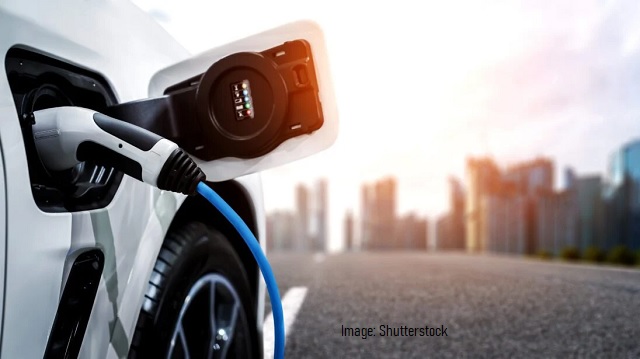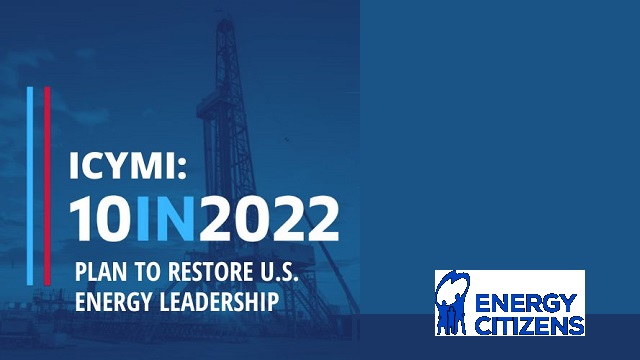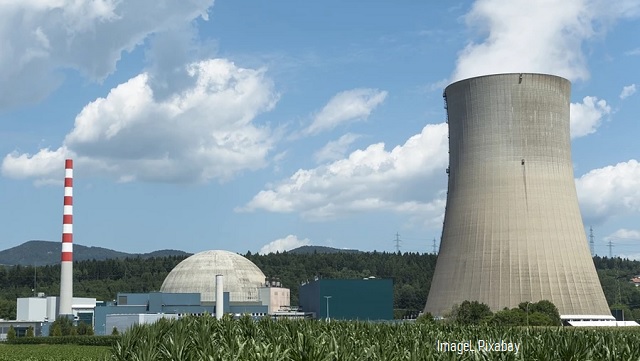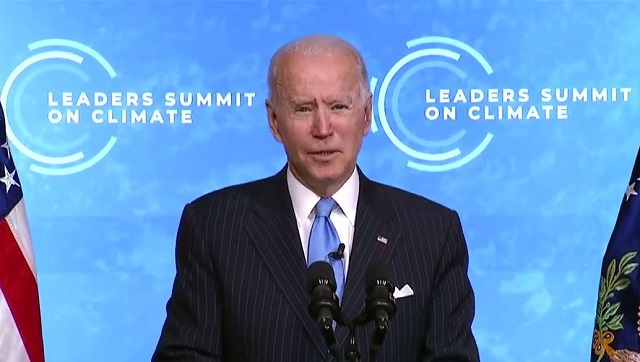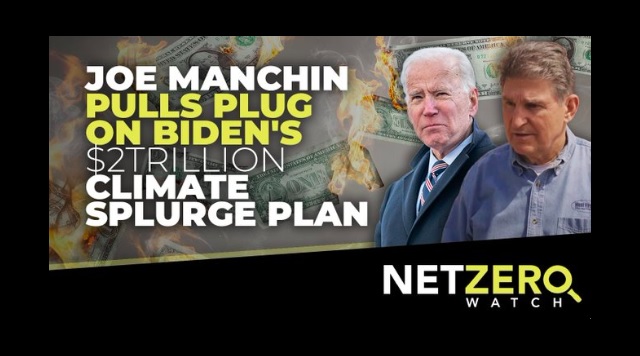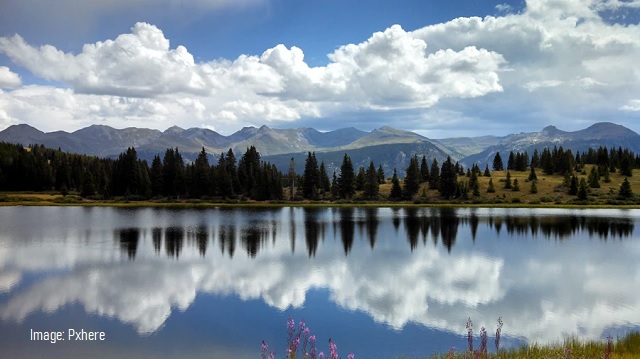The Government Can Make Climate Change Much Worse
By Josiah Neeley
Suppose everything you hear in the news about climate change is true. Suppose climate change is real, suppose it is primarily due to the burning of fossil fuels, and suppose that if this continues, the costs will be significant. Suppose all this is true. How should those who disagree with the likely massive government response that could follow actually challenge it?
According to many on the left, accepting the above would mean game over for a wide range of liberties. But buying into this assumption is a mistake. When leftists claim that only a bigger government can deliver affordable health care or quality education, the response from conservatives and libertarians is not to deny that illness or ignorance exists. Instead, those who love liberty argue that more government is not the best way to achieve these goals, and in fact have developed their own set of conservative policy responses — such as high-deductible savings accounts and school vouchers — in place of government-based solutions.
The same approach can and should be taken with respect to climate change. The reality is that some of the best ways to reduce greenhouse gas emissions and protect against the dangers of a hotter world involve less government, not more. I’ll focus here on three: 1) cutting regulatory red tape for clean energy sources, 2) removing restrictions on energy competition, and 3) eliminating environmentally harmful subsidies.
Cutting Regulatory Red Tape
Some of the most promising forms of zero-carbon energy are hamstrung by regulations. Nuclear power, for instance, provides the majority of zero-carbon energy used in the United States today and is a proven source of safe and reliable electricity. Yet between 1978 and 2012, no nuclear reactors were approved in the United States. And of the new plants announced since then, most have been canceled due to cost overruns.
The costliness of nuclear power has many causes, but regulatory compliance is a major factor. A recent study by the American Action Forum found that the average nuclear reactor faces $219 million in regulatory liabilities, with some companies facing regulatory liabilities of more than $8 billion. Granted, nuclear power involves a unique set of risks that may call for special regulation. But the costliness of the current approval process in both time and money is vastly out of proportion to the risks involved.
Hydropower, another zero-carbon energy source, faces similar permitting problems. Hydro-power had the potential to grow by as much as 50 percent, and many existing dams that could be used for power generation currently cannot do so. The permitting process, however, is full of redundancies and can be gamed for delay. Removing these obstacles would help clean energy thrive without increasing the state’s footprint.
Expanding Market Competition
Conservatives and libertarians have long recognized the power of market competition to drive innovation. Yet in much of the United States, market competition for electricity is illegal.
Instead, electricity is provided by monopoly utilities, which are protected from competition and have their rates approved by some form of government body. Decisions as to whether to keep a power plant online are as much political as they are economic.
This system was not designed to keep emissions high but, in practice, it has had that effect. In the past decade, emissions from the power sector have fallen rapidly as low-cost natural gas has displaced higher-emitting coal as the nation’s largest power source. More recently, falling prices for wind and solar power have started to make those technologies more competitive as well. Yet states, where electricity providers are insulated from competition, have often resisted this change. Electricity rates in monopoly states are set based on “cost recovery,” which means that the more money a utility spends, the higher the rates it can charge. As a result, utilities face less market pressure to close uneconomical plants and may even spend large amounts of money to keep plants in operation because they are guaranteed cost recovery.
The lack of competition has also made utilities less responsive to the growing consumer demand for so-called “green energy.” The number of “green choice” customers in states with retail competition increased by 142 percent over a two-year period (from 2010 to 2012) while remaining flat in states without retail choice. And Texas, which has the freest electricity market in the nation, also has the most wind-power generation.
Finally, even those coal plants that have remained in operation under competition have tended to emit less CO2 than comparable plants elsewhere. Between 1991 and 2005, states that restructured their electricity market to allow more competition saw improved fuel efficiency from coal plants, resulting in a 6 percent reduction in CO2 emissions from those plants.
Eliminating Environmentally Harmful Subsidies
As the Hippocratic Oath states, the first duty of a physician is to do no harm. Yet all too often in the political realm, the government encourages environmentally destructive behavior through subsidies and other government spending. Climate change is no exception.
Consider flood insurance. Even if we were to radically reduce greenhouse gas emissions, we would still need to prepare for the warming from past emissions, part of which will involve adapting to higher sea levels. Yet current federal and state policies encourage people to live near the coast, where they will be in greater danger from storms and flooding.
The National Flood Insurance Program, for instance, provides below-market-rate flood insurance policies to people living in flood-prone areas. Originally meant as a way to provide people with insurance not available on the private market, the NFIP has racked up billions in debt while undercutting the private flood insurance market. For our purposes, the critical fact is that the NFIP encourages people to live and build in flood-prone areas, increasing our national vulnerability to climate-related harms. As Hayek famously observed, prices convey information. In a market system, if a property in an area is at an increased risk of flooding, the cost of insuring the property will be higher, which will discourage unnecessary development. By contrast, when the NFIP offers below-market-rate insurance policies along the coast, they are sending people the (false) signal that the risks are lower than they really are. Stopping this perverse practice would help people better assess how to minimize the risks that come from a warming climate.
The examples given above are only a few of the many possible conservative responses to climate change. My goal has not been to offer a comprehensive list, but rather to show that it is simply not true that policies to address climate change must result in bigger government. Advocates of liberty should not be afraid to tackle the climate issue directly. Instead, we should be bold in proclaiming what we know from other political issues. Limited government principles are perfectly capable of dealing with the most pressing problems of the day, including climate change.
*****
This article was published by Law & Liberty and is reproduced with permission.
TAKE ACTION
Are you concerned about election integrity? What informed United States citizen isn’t? Did the 2020 national election raise many questions about election integrity? Are you concerned about the current cycle of primaries and then the general election in November? No doubt the answer for The Prickly Pear readers is YES.
Click below for a message from Tony Sanchez, the RNC Arizona Election Integrity Director to sign up for the opportunity to become an official Poll Observer for the 8/2 AZ Primary and the 11/8 General Election in your county of residence. We need many, many good citizens to do this – get involved now and help make the difference for clean and honest elections.


